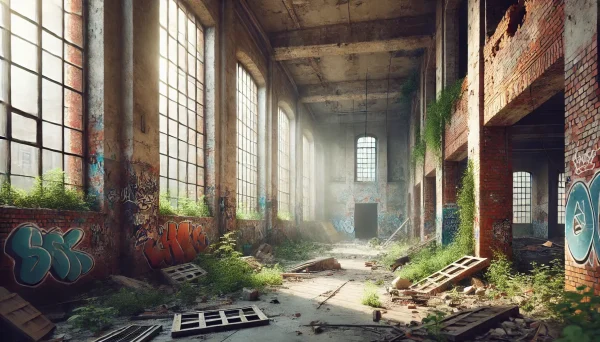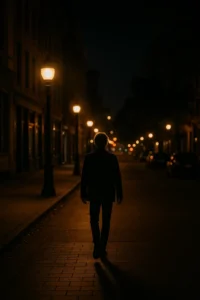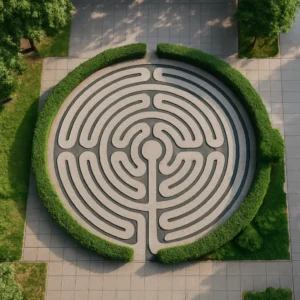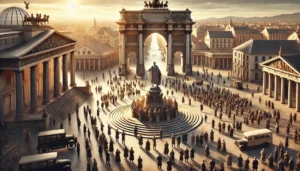Urban ruins are more than abandoned structures; they are living testimonies of human ambition, societal change, and the inevitable passage of time. As we walk through crumbling factories, decaying mansions, or forgotten subway stations, we encounter not only the physical remnants of what once was but also silent stories of past civilizations, cultures, and economies. Urban ruins invite us to reflect, question, and learn from the past in ways that modern landscapes often cannot.
The Silent Stories Embedded in Decay
Every cracked wall, rusted gate, and broken window tells a story. Urban ruins carry the imprints of those who once lived, worked, or passed through these spaces. These remnants of human activity provide clues about how societies were structured, what people valued, and how they interacted with their environment.
For instance, the abandoned factories of Detroit in the United States reflect the rise and fall of industrial capitalism. Once thriving with workers and machines, these structures now symbolize economic shifts, technological advancements, and the consequences of dependency on a single industry. In other places, ruined theaters or grand hotels tell us about the cultural priorities of a city, its prosperity, and its eventual decline.
Architecture as a Historical Document
One of the most striking lessons that urban ruins offer is how architecture can serve as a historical record. The design, materials, and construction techniques reveal the technological capabilities and artistic preferences of the time when they were built.
For example, Soviet-era apartment blocks left in Eastern European cities are more than just concrete structures. They represent a political ideology, social engineering efforts, and the attempt to create uniformity among citizens. By analyzing these buildings, historians can better understand the aspirations and limitations of that period.
Similarly, ornate train stations or colonial buildings in former imperial cities reveal how architecture was used to project power, prestige, and cultural dominance.
Lessons of Impermanence and Change
Urban ruins remind us that no city, empire, or society is immune to change. They stand as monuments to impermanence, showing how political shifts, economic downturns, or environmental disasters can transform a once-vibrant place into a forgotten shell.
These ruins urge us to reflect on the fragility of our own systems. If grand cities and prosperous industries of the past could fall into decay, what lessons can we learn about sustainability, urban planning, and cultural preservation today?
Moreover, they highlight how communities adapt and repurpose spaces. In many cities, old factories are being transformed into art galleries, cultural centers, or creative hubs—demonstrating resilience and the human capacity to find new meaning in old spaces.
Cultural Identity and Collective Memory
Urban ruins often become powerful symbols of cultural identity. They hold collective memories and emotions, serving as sites of mourning, nostalgia, or pride. For local communities, these ruins can represent shared histories, struggles, and achievements.
Take, for example, the Colosseum in Rome. Though technically a ruin, it is cherished and protected because it connects modern Romans to their ancient heritage. On a smaller scale, a closed-down school or abandoned church in a neighborhood can evoke memories and a sense of belonging for former residents.
In this way, urban ruins help societies maintain a connection to their roots while also encouraging dialogue about the future.
The Ethics of Preservation vs. Progress
Urban ruins also force us to confront ethical questions about preservation and progress. Should we preserve decaying buildings as historical monuments, or should we demolish them to make space for new development? What parts of history are worth saving, and who decides?
In some cases, preserving ruins can prevent dangerous gentrification and displacement of local communities. In others, it may perpetuate economic stagnation if a city cannot modernize due to an excess of protected buildings.
These debates highlight the tension between remembering the past and building the future—a balance every society must navigate.
Inspiration for Art, Media, and Philosophy
Urban ruins have long inspired artists, writers, and thinkers. The aesthetic appeal of decay, known as “ruin porn,” captures the beauty in brokenness and the poetry in silence. Photographers travel the world to document abandoned amusement parks, crumbling asylums, and overgrown train tracks, creating visual narratives that spark curiosity and reflection.
Beyond visual art, ruins have influenced philosophy and literature. Thinkers like Walter Benjamin wrote about the metaphysical significance of ruins, suggesting they represent humanity’s attempt to make sense of history and mortality.
By exploring urban ruins, we tap into the universal human experience of loss, memory, and the passage of time.
What Urban Ruins Teach Us Today
Ultimately, urban ruins teach us that history is not static. It lives on in forgotten corners of our cities, whispering lessons about ambition, failure, resilience, and change. They remind us to appreciate what we have, learn from what has been lost, and carefully consider the legacy we are building for future generations.
For urban planners, historians, and everyday citizens alike, the ruins around us are more than debris—they are teachers, guardians of memory, and invitations to imagine new possibilities grounded in the past.







